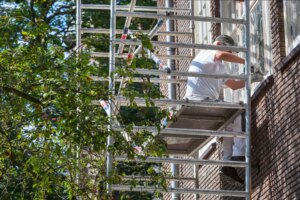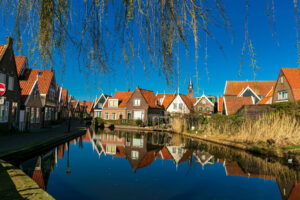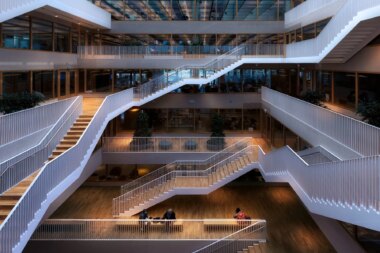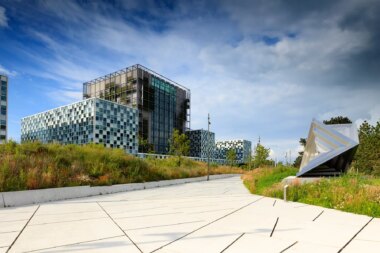If you’re a green-minded expat in the Netherlands, you’re probably wondering what you can do to make your new life abroad more sustainable. Thankfully, living more environmentally-minded comes quite easily for the Dutch. In fact, making greener decisions can easily become part of your everyday life in the Low Countries.
To help you boost your green credentials, we take a look at 10 ways you can live more sustainably in the Netherlands.
1. Choose a green energy provider
The Dutch have a long history of harvesting renewable energy. For centuries, the locals have used windmills to drain wetlands and produce food and other goods. You’ll find plenty of these living monuments during all those scenic bike rides, but don’t expect these windmills to be powering your home any time soon. In fact, the Netherlands actually lags behind other EU countries when it comes to renewable energy use. However, don’t let that put you off doing your part for the planet by choosing a green energy supplier.
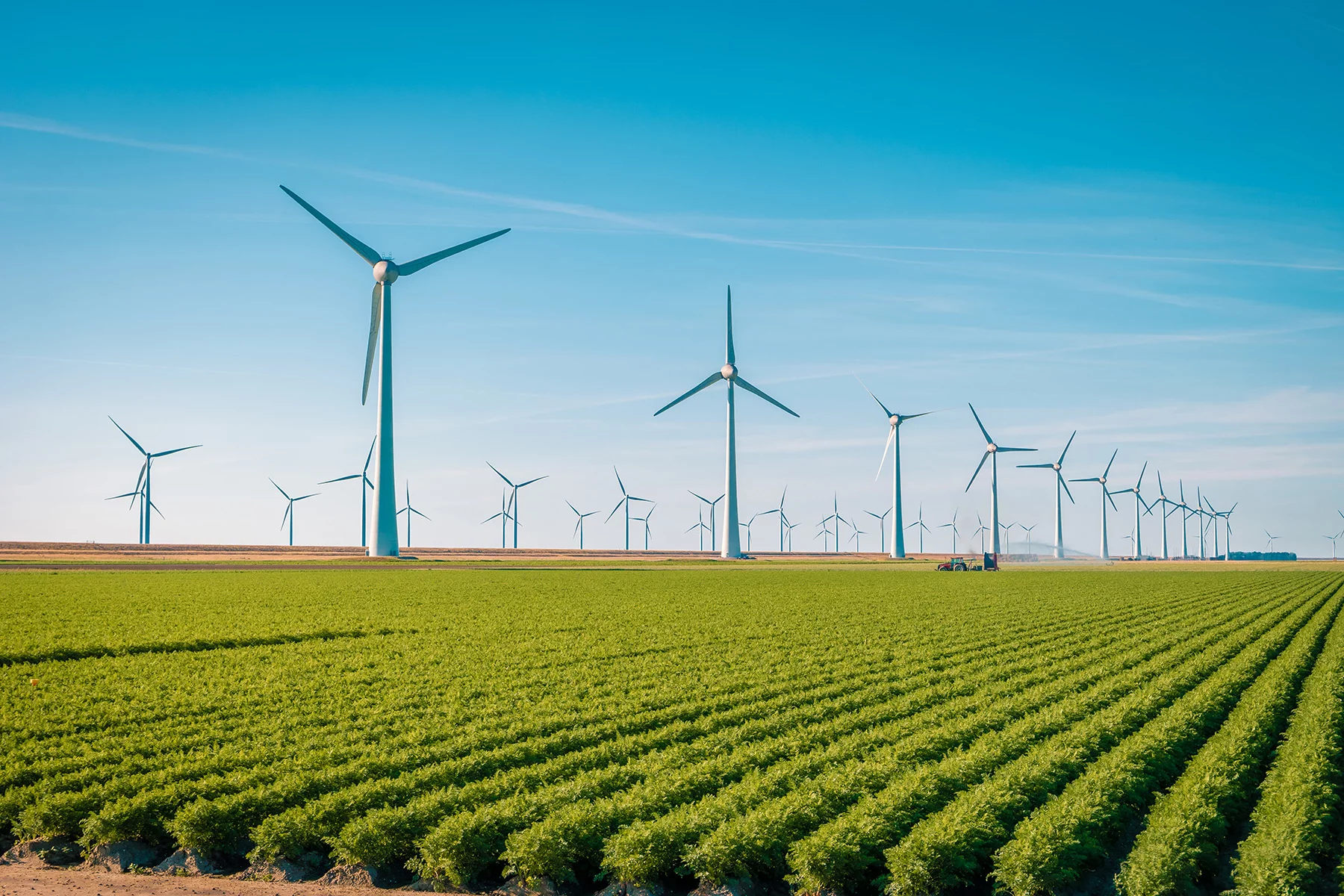
If you’re new to the Netherlands, one of the first things you’ll need to do in your new home is set up gas and electricity. When it comes to choosing a Dutch energy supplier, you have plenty of choices. However, if you’re sustainably-minded, why not consider a green energy provider? An increasing number of Dutch energy companies area offering green electricity, including:
If all this choice is a little confusing, comparison websites like UnitedConsumers can help.
2. Invest in a bakfiets
There’s nowhere quite like the Netherlands when it comes to cycling. In fact, the country has some of the best biking infrastructure in the world. Wherever you’re living, you’ll soon discover that the best way to get from A to B is often on two wheels, whether you’re going to your local Dutch supermarket or visiting a doctor in the Netherlands. There are also plenty of scenic bike routes crisscrossing the Dutch countryside if you feel like getting out of town. If you’re a green-minded parent, don’t let yourself be tempted to dump the kids in the back of the car. There are other options, like a bakfiets.

Cities like Amsterdam have already announced plans to ban fossil fuel-powered vehicles from 2030. But instead of making the switch to electric, why not consider getting rid of the car completely? Swapping your family runaround for a bakfiets is great for your fitness and a good way to lower your everyday carbon footprint by reducing your car use. Bakfiets are versatile, too. Not only can you drop the little ones off at school, but you’ll also be able to fill up your bakfiets with grocery shopping, picnic essentials, and even furniture.
3. Compost at home
If you’ve just whipped up one of these great Dutch recipes for your family, you might have a lot of leftovers to deal with. However, before you slide those unwanted food scraps into the trash, why not consider composting? Getting yourself a kitchen caddy for all those dinnertime leftovers can be a great investment in your sustainable lifestyle.
Outside of the big cities, the Netherlands make it easy to compost. Municipalities will often provide you with two bins: one for general trash, and one for GFT, which stands for Groente- Fruit- & Tuin-afval (vegetable, fruit, and garden garbage). Stick all your organics in there and wheel it out to the street for the bin men, usually every two weeks. Not only will it help you save space in what often feels like limited allowance on regular trash, it will also help you live more sustainably in the Netherlands and save the planet a little bit.
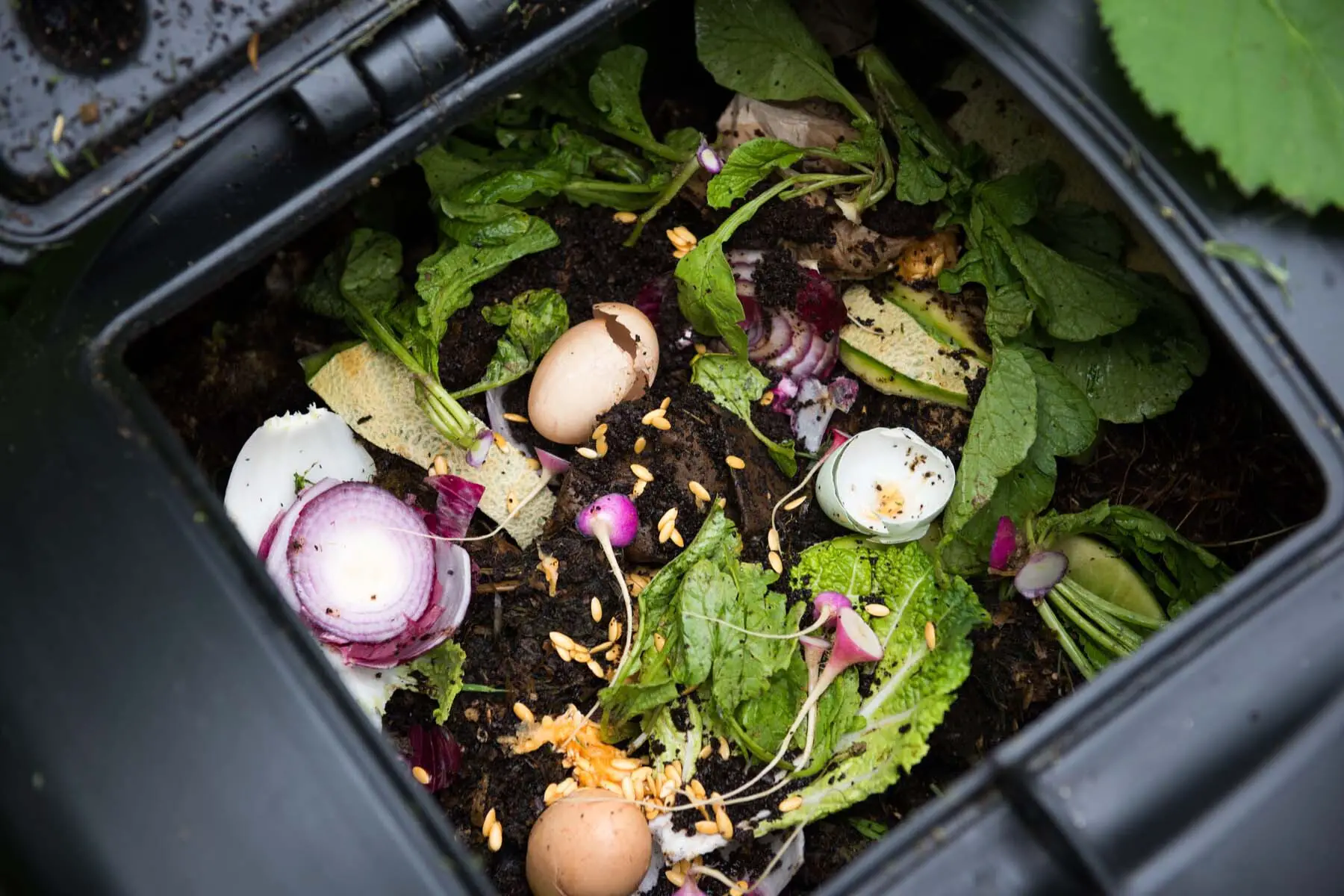
You can even take composting up a notch and do it at home, to use on your own vegetable garden or flowerbeds. Composting is not just great for those with backyards, either. Your homemade compost will make your Dutch balcony the envy of your block in no time.
Wherever you’re living, getting started with your new food composting habit is fairly straightforward. There are two main ways to compost in your kitchen: worm bins and bokashi. The bokashi system includes microbes while the worm bins involve, well, lots of earthworms. Whichever method you choose, you’ll be pleasantly pleased with just how unintrusive composting is. You can put your composting bin on the kitchen countertop, the balcony, or in the garden. Before you know it, you’ll have great, homemade compost for your plants and flowers.
4. Get involved with the sharing economy
You’ve probably heard the term sharing economy, but knowing how it can affect your life might not be obvious at first. The sharing economy is all about shifting the focus from ownership to access, whether a method of transport, living space, or even knowledge. In a country like the Netherlands, the sharing economy is all around you, making it easier than ever to get involved.
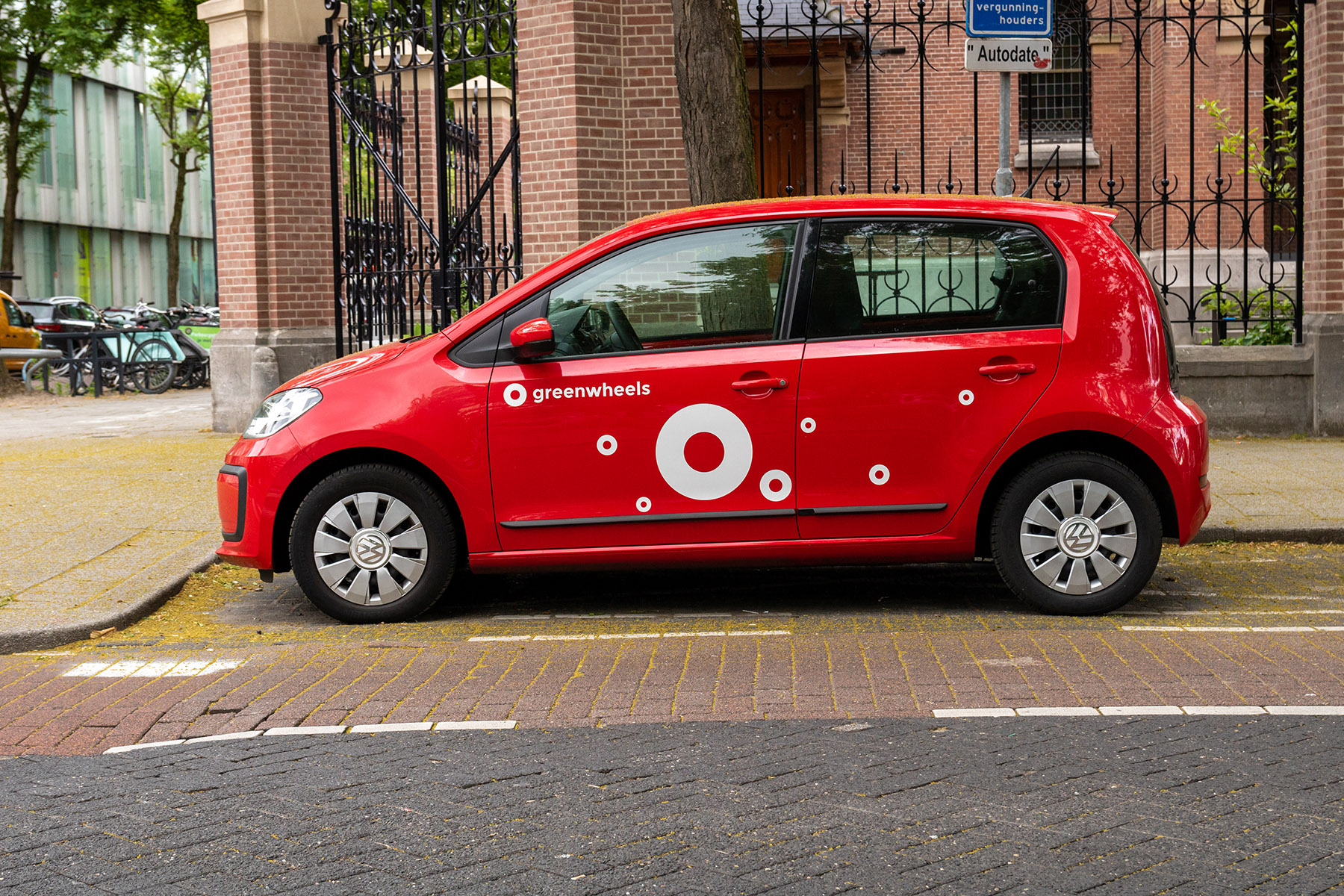
In the Netherlands, you have plenty of options if you want to dip your toe into the local sharing economy:
- If you spend most of your time on two wheels, you probably won’t want to own a car. However, with car-sharing platforms like SnappCar and Fetch your family access to four wheels when you need it.
- Need something in a hurry? Peerby lets you quickly borrow items from your neighbor, whether you’re after a jet-washer or a cargo bike.
- Storage space can be hard to come by in some of the older Dutch homes. Djeepo connects you with neighbors who have storage space to spare.
- You don’t know how to drill a hole in concrete but you’re happy to walk dogs? The Dutch’s spirit of community also extends into the sharing economy.
5. Shop locally
Do you know how far your groceries have traveled before they make it onto your dinner plate? We don’t mean your bike ride back from your local Dutch supermarket, either. We’re talking about the total journey from field to fridge – also known as food miles. Reducing the food miles of your household groceries can be a great way to help tackle your carbon footprint. According to a report by the Dutch government, the type of diet you consume has a big impact on your carbon emissions. For example, diets rich in meat and dairy will have more food miles than vegetables and fresh produce.

However, there are other things you can do to reduce these carbon emissions without dramatically changing your diet. Firstly, making different choices at the supermarket can help. This includes choosing locally-grown options where possible and opting for seasonal produce. You can also shop locally. In most towns and cities across the Netherlands, you’ll find weekly markets where you can buy fresh, locally-produced foods, sometimes directly from the farmer. Not only will you reduce your food miles, but you’ll also enjoy fresher foods. Another way to enjoy healthy food while reducing food waste is to use a meal kit service, such as Green Chef. Some meal kit providers work on increasing their sustainability by providing reusable packaging, sourcing ingredients locally, and limiting their transport emissions.
6. Download the right green apps
We seem to spend our lives on our smartphones, but can they really hold the answer to living more sustainably in the Netherlands? Possibly. Ensuring you download the right apps is an easy first step to living greener. Helpfully, there are a whole host of sustainable apps in the Netherlands, covering everything from environmentally-friendly restaurants to greener fashion choices. But which ones should you be downloading? That depends on you. If you really want an app to make a difference to your life, it’s important you download one you’ll actually use.

Here are a few of our favorite green Dutch apps:
- Save delicious food from the trash with Too Good To Go. Using the app, you can find goodies at a reduced price from local eateries, helping them cut down on food waste.
- Like your fashion? Buy and sell secondhand clothing and accessories on Vinted and stop all those vintage must-haves from ending up in a landfill.
- Spend your life searching online? Why not plant a tree with every search? Download Ecosia and your own personal tree counter will tell you how many you’ve helped plant.
You can also make good use of an app you already use on a daily (hourly?) basis: Facebook. A quick search can help you find a local group where members share great advice and tips on sustainability in your area. Amsterdam even has a sustainable expat group.
For more information on Dutch apps and what you should be downloading, read our guide to the must-have apps in the Netherlands.
7. Go paperless with your banking
If you’re setting up your new life in the Netherlands, one of the first things you’ll need to do is open a Dutch bank account. Not only will having a local account help you set up important payments for your home telecoms in your Dutch house as well as your Dutch mobile phone, among others, but it’ll also make it easier for you to buy all those household essentials in the Netherlands. However, banking can mean a lot of mail being delivered to your home. This includes bank statements, credit card bills, and other financial literature.
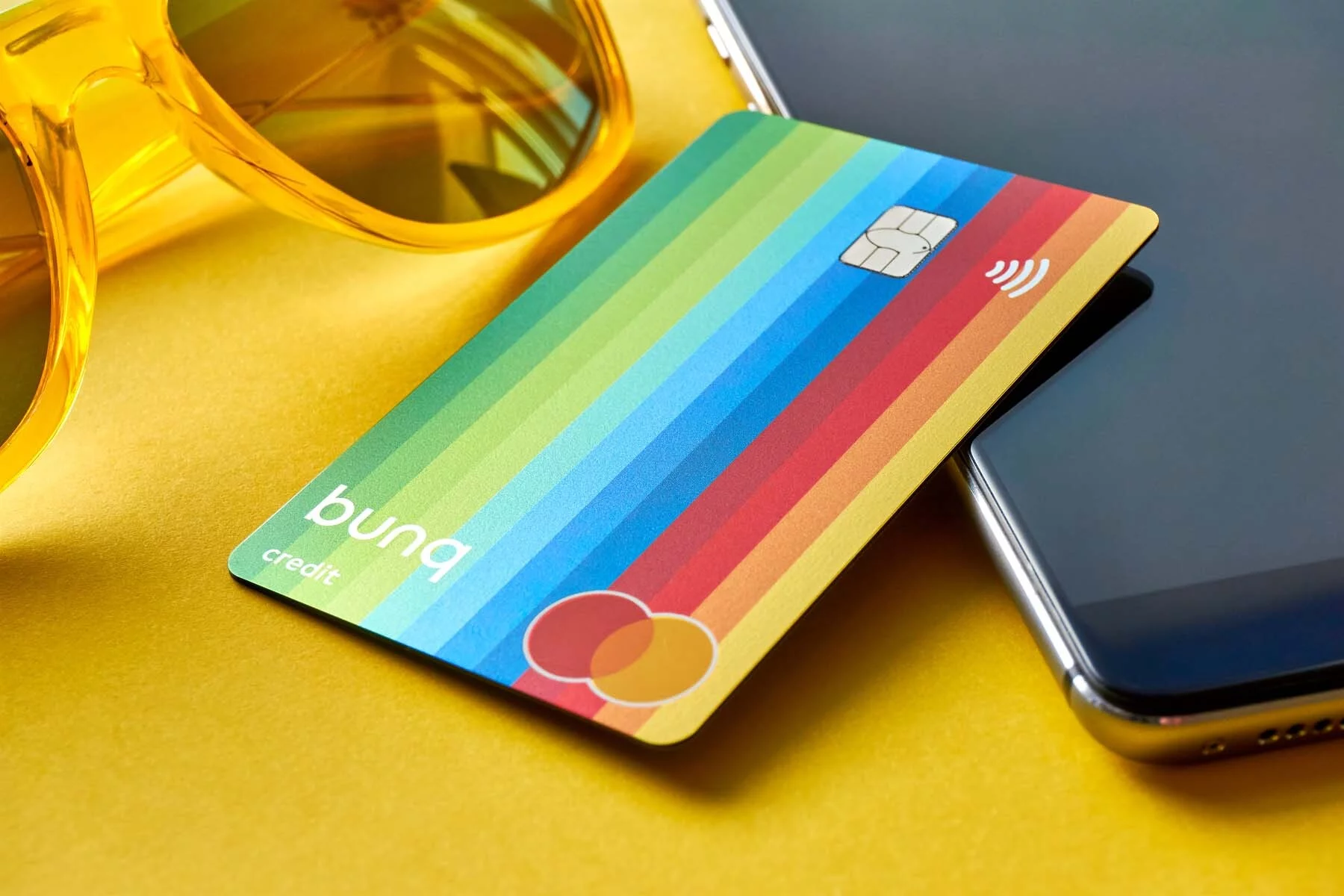
These days, making your banking completely paperless is relatively easy for green-minded expats. While most of the larger Dutch retail banks offer an increasing number of paper-free options, the easiest way to go green is by signing up for mobile banking in the Netherlands. There are a growing number of mobile banks to choose from, including bunq and N26. Not only can you apply for an account in minutes with a mobile bank, but you’ll also receive all your bills and correspondence straight to your phone.
8. Watch your water usage
Living in the Netherlands, you might not think about conserving water. In fact, sometimes it seems like half the country is water. However, despite the canal network and all that Dutch rain, the Netherlands is not immune to global water shortages. But there are ways you can help address this wider issue. According to the experts, the average Amsterdam resident uses around 133 liters of water every single day. That’s equal to around 13 buckets per person – but you can always try and reduce your usage.
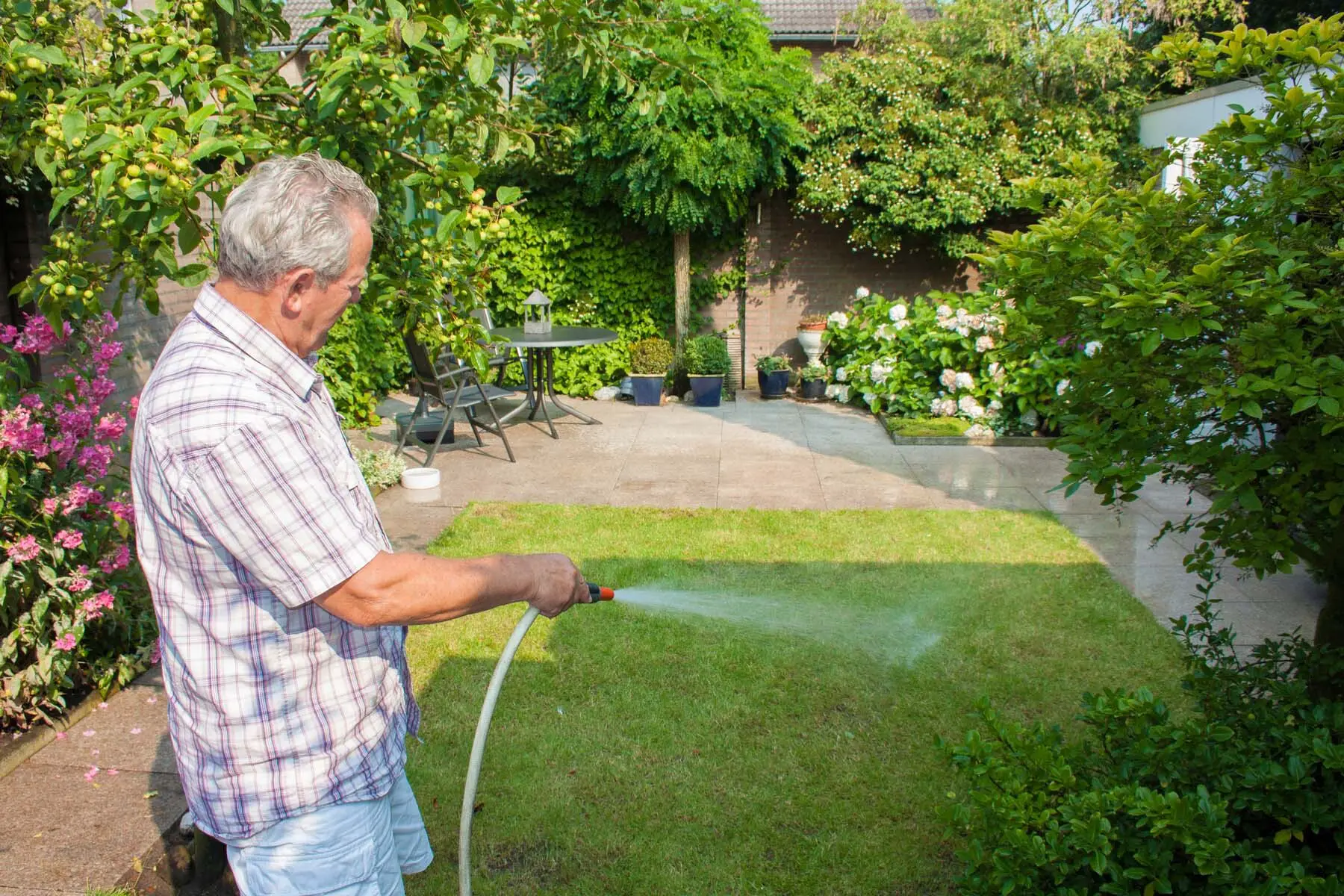
Thankfully, there are lots of small and simple ways to help you lower your water usage around the home. For example, in the bathroom, you can swap your shower head for one that restricts flow and saves water. You can also add a plastic bottle into your toilet tank to save on those flushes. Unlike energy companies, you won’t be able to choose an alternative water provider in the Netherlands. However, many water companies are only too keen to help you save water, so contact yours and see what products and advice are on offer.
9. Replace those old appliances
Whether you’ve recently moved to the Netherlands or you’ve been going Dutch for years, you probably haven’t given much thought to your household appliances. In fact, you might just be happy if they’re in full working order. However, if you want to live sustainably in the Netherlands, you might want to rethink that old fridge or fryer. Experts over in the UK suggest that not only will a new appliance help you cut down on your energy usage, you’ll also save money on utility bills. Win-win!
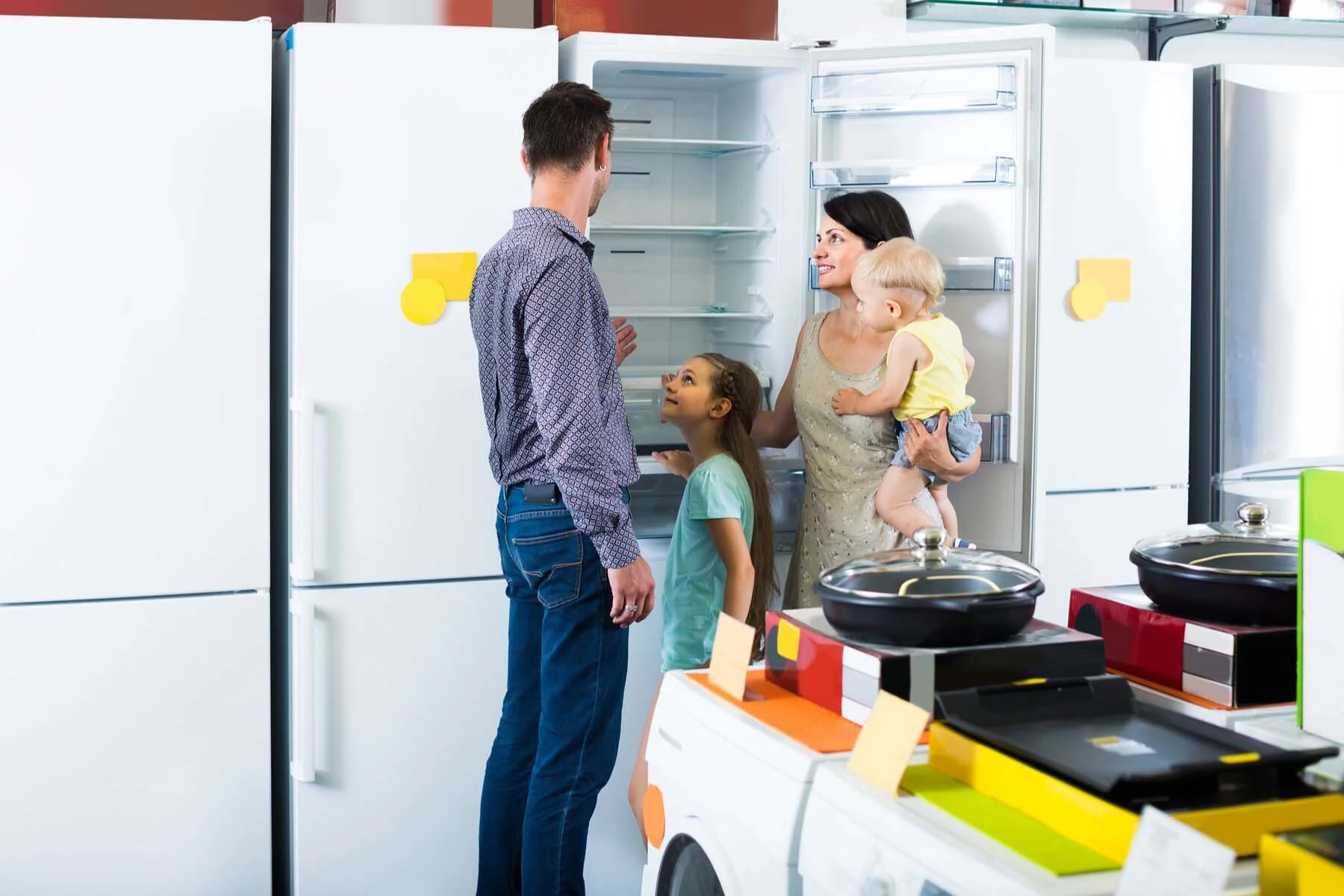
If you’re thinking about buying new home electricals, you have some options in the Netherlands. Electronics retailers like MediaMarkt and BCC stock a range of products, while smaller appliances can be found at Blokker and HEMA. Make sure to pick machines with the best energy ratings; some even offer shorter, eco cycles that wash your laundry or dishes just as well.
And of course, if you are replacing your old appliances, make sure you recycle them properly! Most municipalities will have their own designated recycling point for these items, so search online for your nearest location.
10. Recycle, recycle, recycle
One of the easiest things to do to live more sustainably in the Netherlands is to get on top of your three R’s: reduce, reuse, and recycle. In this article, we’ve looked at ways you can reduce your water use and car emissions. We’ve also seen how you can reuse other people’s appliances and transform your food waste into fresh compost for your garden. However, for many expats in the Netherlands, the third R is the easiest. The Dutch have created an easy-to-use recycling system that sees over 55% of all municipal waste recycled.
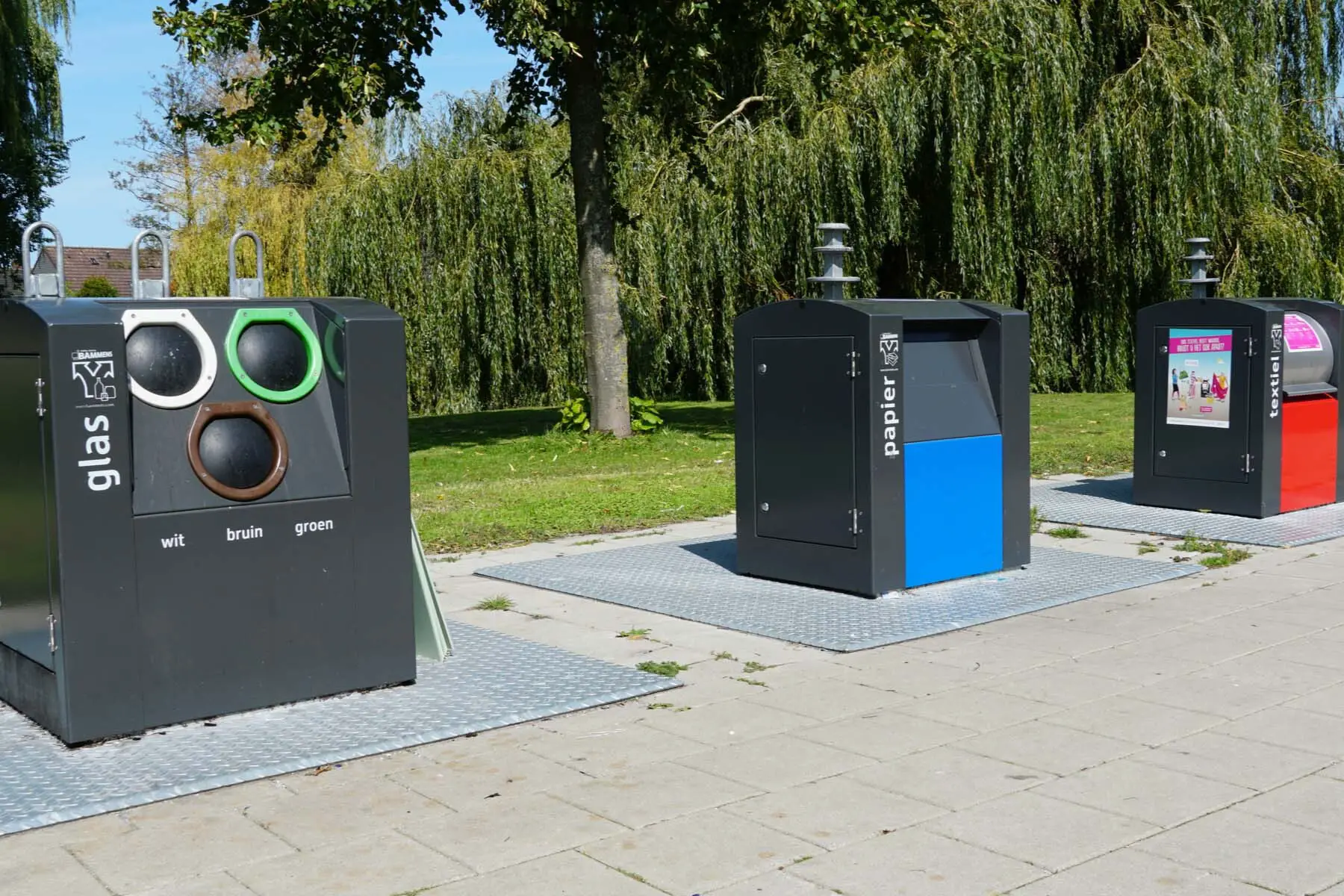
How you recycle will largely depend on where you live in the Netherlands. For example, in places like Amsterdam, you’ll find communal roadside facilities where you can recycle paper, glass, and plastic, among other materials. In other areas, your local municipality will provide you will recycling containers. You’ll then have roadside collections every week or fortnight, depending on your location. Many Dutch supermarkets also have recycling centers inside, where you can deposit glass and plastic drinks bottles.
Finally, make sure to recycle your lightbulbs and batteries. Most supermarkets offer containers where you can drop these off, as well as small electronics like cell phones. Every little bit counts.
Useful resources
- I Amsterdam – waste, and recycling information for Amsterdam
- Sustainable Amsterdam – information on sustainability



